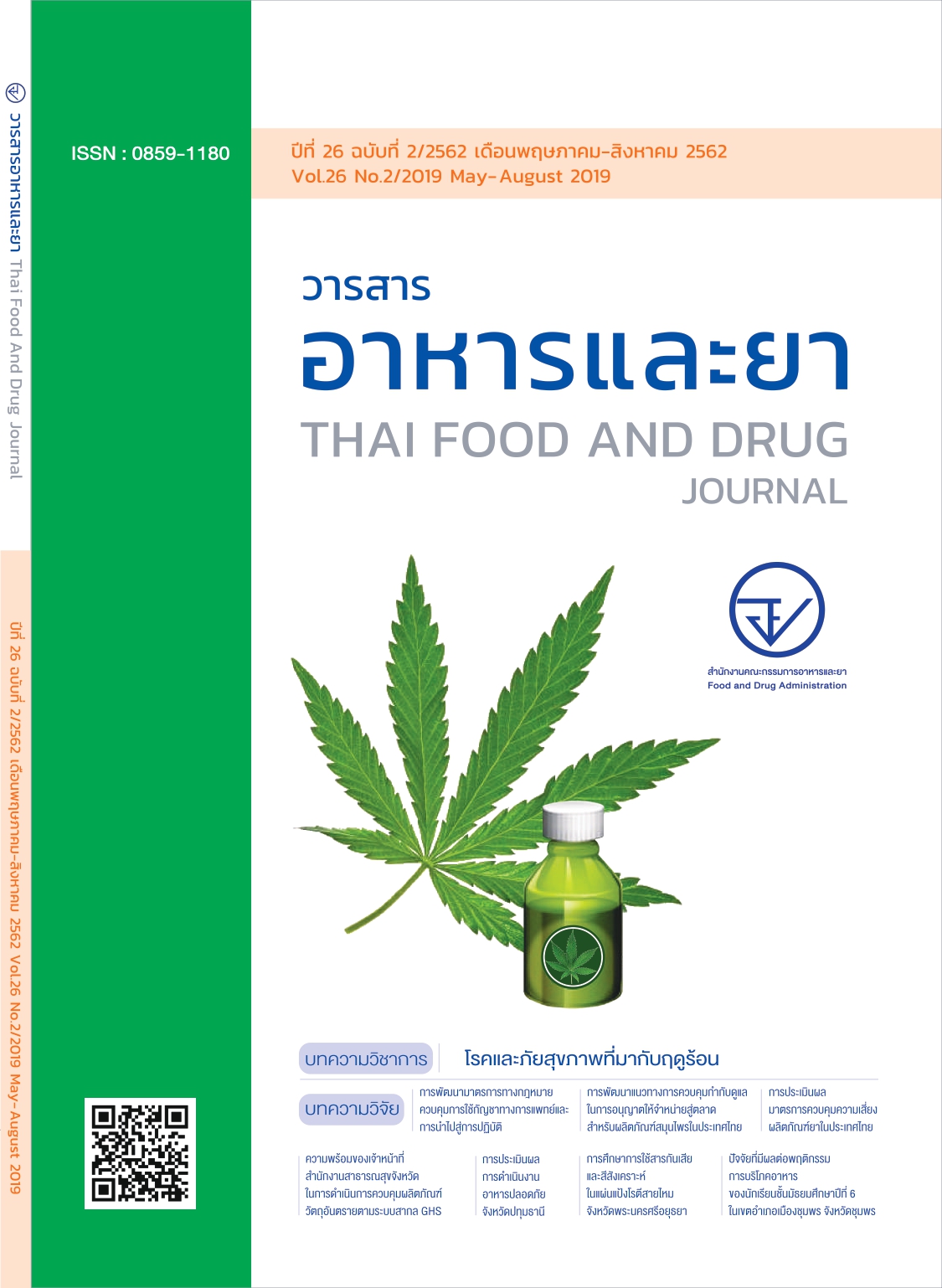การพัฒนาแนวทางการควบคุมกำกับดูแลในการอนุญาตให้จำหน่ายสู่ตลาด สำหรับผลิตภัณฑ์สมุนไพรในประเทศไทย
Main Article Content
บทคัดย่อ
การวิจัยนี้มีวัตถุประสงค์เพื่อพัฒนาแนวทางการควบคุมกำกับดูแลในการอนุญาตให้จำหน่ายสู่ตลาดสำหรับผลิตภัณฑ์สมุนไพรในประเทศไทย เพื่อประกอบการพิจารณาจัดทำกฎหมายลำดับรองตามพระราชบัญญัติผลิตภัณฑ์สมุนไพร พ.ศ …. การศึกษานี้เป็นการวิจัยเอกสารและการวิจัยเชิงคุณภาพโดยศึกษาและวิเคราะห์เปรียบเทียบระบบการอนุญาตให้จำหน่ายสู่ตลาดสำหรับผลิตภัณฑ์สมุนไพรในประเทศต่างๆที่เลือกทำการศึกษา ได้แก่ สหรัฐอเมริกา ญี่ปุ่น ออสเตรเลีย สิงคโปร์ มาเลเซีย ไทย กลุ่มประเทศสหภาพยุโรป และกลุ่มประเทศอาเซียน ผลการวิจัยพบว่า การเรียกชื่อและจัดประเภทรวมทั้งกระบวนการขออนุญาตผลิตภัณฑ์สมุนไพรในประเทศที่ทำการศึกษาค่อนข้างหลากหลายแตกต่างกันขึ้นกับระบบการควบคุมกำกับดูแลและกฎหมายของแต่ละประเทศ ผู้วิจัยได้จัดทำ (ร่าง) แนวทางการควบคุมกำกับดูแลในการอนุญาตให้จำหน่ายสู่ตลาดสำหรับผลิตภัณฑ์สมุนไพรในประเทศไทยโดยปรับเปลี่ยนจากระบบของประเทศที่ทำการศึกษาดังกล่าวให้เหมาะสมกับประเทศไทย หลังจากนั้นเก็บข้อมูลผลการรับฟังความคิดเห็นจากการประชุมกลุ่มย่อยผู้เกี่ยวข้องเกี่ยวกับร่างดังกล่าว ผู้วิจัยได้พัฒนาแนวทางการควบคุมกำกับดูแลในการอนุญาตให้จำหน่ายสู่ตลาดสำหรับผลิตภัณฑ์สมุนไพรในประเทศไทยโดยวิเคราะห์จากผลจากการประชุมกลุ่มย่อยและปรับเปลี่ยนให้เหมาะสมประกอบด้วยสาระสำคัญได้แก่ 1.) การจัดแบ่งประเภทผลิตภัณฑ์สมุนไพรเป็น 2 ประเภทคือ ผลิตภัณฑ์ยาจากสมุนไพร และผลิตภัณฑ์เสริมสุขภาพจากสมุนไพร 2.) การจัดแบ่งประเภทข้อบ่งใช้หรือการกล่าวอ้างทางสุขภาพของผลิตภัณฑ์สมุนไพรตามระดับความเสี่ยงได้แก่ ความเสี่ยงต่ำ ปานกลางและสูง 3.) การกำหนดประเภทผลิตภัณฑ์สมุนไพรซึ่งการผลิตหรือนำเข้าเพื่อขายต้องได้รับใบรับจดแจ้งหรือใบรับแจ้งรายละเอียดหรือใบสำคัญการขึ้นทะเบียน 4.) การกำหนดรายการอื่นที่ต้องยื่นในการจดแจ้ง การแจ้งรายละเอียด และการขึ้นทะเบียนผลิตภัณฑ์สมุนไพร


